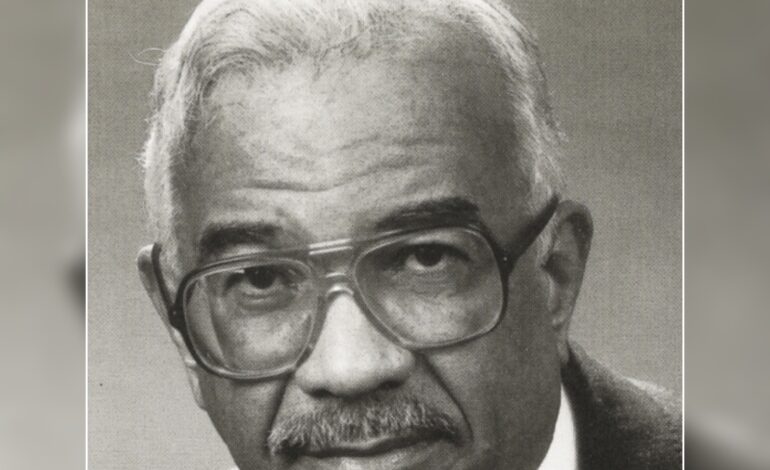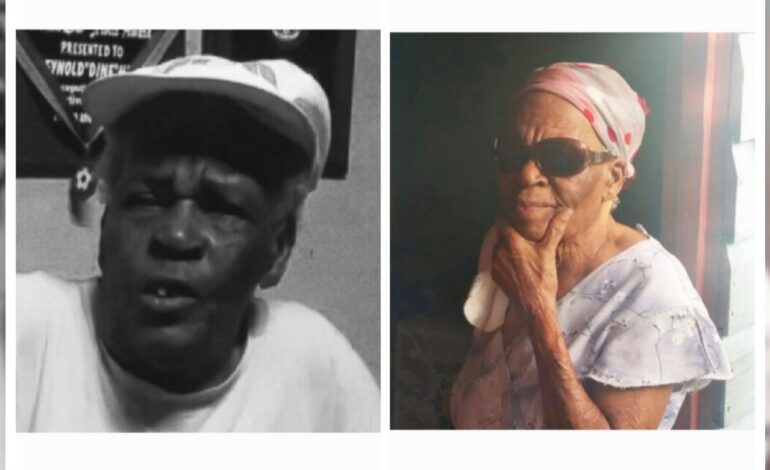
The University of the West Indies (The UWI) is mourning the passing of another family member, former principal of the Mona Campus and renowned scientist, Professor Emeritus, the Honourable Gerald Cecil Lalor, OJ, CD, OM, who transitioned on August 23, 2021.
In his reflection on Professor Gerald “Bunny” Lalor, Vice-Chancellor, Professor Sir Hilary Beckles said, “Professor Lalor was the quintessential representative of the gentleman scholar who shaped the academic and administrative culture of The UWI system. He was humane in his thinking and humorous in approach, a combination that won universal love and respect among his peers. As an early pioneer of UWI science and technology, he will be remembered and celebrated as a giant whose footprints paved the way for generations of staff and students.”
Professor Dale Webber, Pro Vice-Chancellor and Principal, The UWI, Mona Campus also acknowledged Professor Lalor as “a giant amongst giants.” He described him as, “a chemist who always knew how to solve a problem, and a mind constantly at work, Professor Lalor was always way beyond his time. The University of the West Indies Distance Teaching Experiment (UWIDITE) stands as a clear testament to his vision and brilliance, but always in the quest to better mankind and the Jamaican people. I still recall the glean in his eye as he demonstrated with pride the first facsimile machine at The UWI as we all looked on in disbelief. The UWI has benefited tremendously in so many ways from his life, thoughts and actions. He was a true Pelican, a scholar, an administrator and a friend.”
This Kingston College old-boy and proud Pelican studied Chemistry, Physics and Mathematics. Soon after completing his studies at the Mona Campus, he began working with the world’s leading producer of logwood dyes at the time, West Indies Chemical Works. While with the company, he did his Masters research on haemotoxylin and hematein. His research would prepare him for an important juncture in his career as when he became Head Chemist at the company, the logwood tree became endangered and like a true problem solver and visionary, he discovered a new method to produce synthetic haemotoxylin, the naturally occurring chemical used as the basis of a dye (from the logwood tree).
A world renowned scientist and visionary with an unwavering passion for research, Professor Lalor joined The UWI family as an assistant lecturer in Chemistry (1960) and three years later obtained his PhD in Inorganic Chemistry from the University of London. Professor Lalor also conducted research for a year at the University of Cambridge on a Leverhulme Colonial Scholarship. His academic journey continued to new heights when in 1966, he traveled to Harvard University as a Carnegie Fellow and upon his return to The UWI Mona, was tapped to head the Chemistry Department. He was the first West Indian to be Head of, and lecturer in, the Chemistry Department. Soon after, he was promoted to the rank of professor in 1969 and served as head of department from 1969 to 1972. He was promoted to Pro Vice-Chancellor in 1974.
In 1991, Professor Lalor was appointed Principal of the Mona Campus where he served until 1996. During his stewardship, he established the Biotechnology Centre; he initiated the computerization of the campus and is credited for improving accessibility for the physically challenged. Upon his retirement, Professor Lalor led the formation of the International Centre for Environmental and Nuclear Sciences (ICENS) (formerly The Centre for Nuclear Sciences) in 1997 and under his leadership led cutting edge research. Recognising the role that nuclear technology could play in the advancement of inter-disciplinary work, with inputs from Natural Science, Medical Science and the Social Sciences; Professor Lalor spearheaded the acquisition and in the installation of the SLOWPOKE-2 Research Reactor at ICENS (formerly the Centre for Nuclear Sciences), as the flagship of the institution.
As Director of ICENS, he contributed to more than 50 scientific publications and led the research team that discovered, reduced, treated and prevented lead poisoning in children in the St Andrew community of Kintyre. Professor Lalor is celebrated and credited for the research he led in the identification and preparation of a geochemical map of the elements in Jamaican soil, this map identified remarkably high level of heavy metals in some of Jamaica’s soil and conducted research on the transfer of these toxic metals to humans, plants and animals and its negative effects on human health. His research provided the Government with important information for planning agencies. He continued his work with the Centre until 2011.
A man clearly ahead of his time, Professor Lalor is also credited for the introduction of the use of satellite technology to broadcast information remotely which led to the development of the University Distance Teaching Experiment (UWIDITE). This project saw UWIDITE lectures being broadcast from the Mona Campus to rural Jamaica and other Caribbean islands that were able to receive the signals.
A giant and visionary in the scientific community both at home and abroad, he was a Fellow of the Third World Academy of Sciences, the Caribbean Academy of Sciences; and the Jamaica Society of Scientists and Technologists. He was a member of the American Chemical Society; the American Association for the Advancement of Science, the New York Academy of Sciences and the Royal Society of Chemistry. He also served on the board of directors of the I.C.W.I Group Foundation, the Gleaner Company and was chairman of the Scientific Research Council Jamaica (SRC).
Professor Lalor received numerous honors for his work as a distinguished scientist. These include the Order of Jamaica; Commander of the Order of Distinction conferred on him for his work in science and technology; the Order of Merit for his contribution to Jamaica and the world’s development through the application of Science, Technology and Innovation and his service in the private sector. He also received The Institute of Jamaica’s Gold Musgrave Medal; the Norman Manley Award for Excellence; the Phillip Sherlock Award for Excellence and the Centenary Medal, just to name a few.
Professor Lalor gave his whole life and heart to science as he believed it was at the centre of human life and they key to improving all our lives regardless of socioeconomic background. The UWI Family is grateful to have been a part of his extraordinary journey. We extend condolences to his wife Noelle and children: Mark, Donna, Robert and Richard; his friends and colleagues in their time of bereavement.






